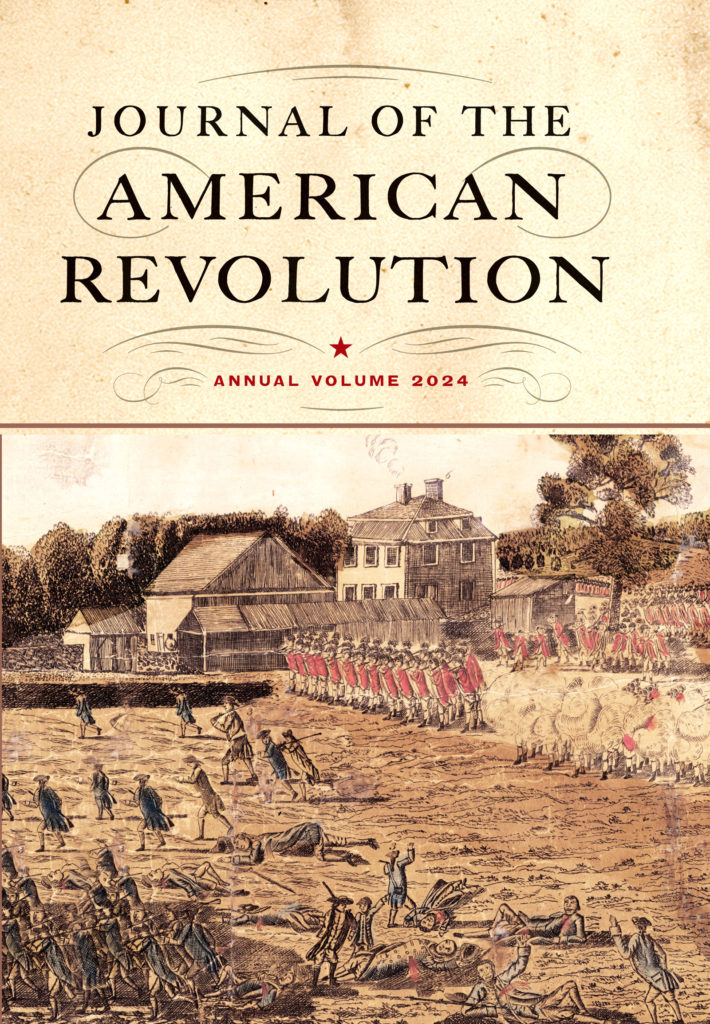 As I quoted yesterday, in 1853 a story surfaced saying that Josiah Waters, Jr., had delivered intelligence about the impending British army march on 18 Apr 1775.
As I quoted yesterday, in 1853 a story surfaced saying that Josiah Waters, Jr., had delivered intelligence about the impending British army march on 18 Apr 1775.
This story is significant in predating Henry W. Longfellow’s poem “Paul Revere’s Ride,” which romanticized the event and focused people’s attention on Revere over all the other people involved in the Lexington Alarm.
It also came with a provenance: from Waters himself to Joseph Curtis to his relation Catherine Curtis to the New England Historic Genealogical Society. Though that story might have evolved along that path of transmission, it’s always good to know that path.
Waters reportedly credited his knowledge of the British military plans to “Jasper, an Englishman, a gunsmith by trade, whose shop was in Hatter’s Square.” This man “worked for the British,” gaining their trust. He rented space to the family of a sergeant major who ended up “telling him all their plans.” Or at least the plans that a sergeant major would be privy to.
Of course I went looking for traces of a gunsmith named Jasper working in pre-Revolutionary Boston. I didn’t find any. But I did find a man named Jasper who came from Britain and worked with metal, so he could have repaired gunlocks along with other things.
William Jasper moved from Britain to North America soon after the end of the French and Indian War. The first sign of him is this advertisement from the 29 Aug 1763 New-York Gazette.
WILLIAM JASPER, cutler, Just arrived from England, is now settled in New York, near the Fly, Queen-Street, near the Burling’s and Beekman’s Slip next Door to Mr. Murray’s, takes this Method to acquaint the publick, That he makes all kinds of Surgeons instruments, and grinds and cleans them; makes Razors, Pen knives, scissars, and all kinds of Edge Tools, which he also grinds; and makes Cutlery in general; makes Buckles of the best Block-Tin, wrought and plain Men’s Gold and Silver Ware; Pinking-Irons of all Sorts; Sadlers Tools; Fret-Saws; Hatters knives; likewise draws Teeth with great Ease and Safety, being accustomed to it for many Years. He likewise has brought over a Quantity of Copper and Tin Hard-Ware. All Persons that please to favour him with their Custom, may depend upon being served in the best and cheapest Manner.
A cutler, according to
Dr. Samuel Johnson, was “one who makes or sells knives.” Jasper made all sorts of bladed tools, from surgeon’s scalpels to fret saws, and he also offered some
dentistry.
In 1768 William Jasper was in Boston, marrying Anne Newman on 29 June 1768. This couple appears on the list of marriage intentions read in all the pulpits, and it’s not clear to me where they actually wed. I also can’t find records of the couple having
children, though there’s a mention of them having done so.
The Curtis story said Jasper the gunsmith had a shop “in Hatter’s Square,” which was also known as Creek Lane and later
Creek Square. It was near the center of town, literally on the Mill Creek that defined the edge of the North End. I can’t situate William Jasper the cutler there, but he must have rented a shop somewhere.
Weapons collectors have found William Jasper’s name on a couple of blades possibly made during the war. Above is his maker’s stamp on a spontoon head from the late 1700s. In
For Liberty I Live, Al Benting described a halberd inscribed with Jasper’s name. I don’t see any sign that he made guns, though perhaps he repaired them.
There was also a William Jasper among the American
prisoners of war taken on the Boston-based
privateer Rising States on 15 Apr 1777 and housed in Forton Prison in Britain. I have no idea what happened to that man and thus whether he could be the cutler. But the surname Jasper was rare in Massachusetts.
The next time William Jasper appeared in a newspaper was this notice in the 8 Aug 1782
Continental Journal:
TO THE PUBLIC.
JASPER, Surgeon Instrument Maker in Boston, has lately invented and compleated an Instrument for drawing Teeth perpendicular, which was never done before, for which if he can have a patentee from Congress, it shall be universally known, if not, let it die in oblivion.
I see no indication that the Confederation Congress considered granting Jasper a patent for this new dental instrument. There was no
statutory process for the national government to grant patents until 1790, and the Congress had a lot of other business to handle in 1782.
Finally, the
Continental Journal of 23 Nov 1786 reported that “Mr. William Jasper, Cutler,” had died in Boston. Anna Jasper administered William’s estate, relying on two men to complete the paperwork since she couldn’t sign her name. William Jasper’s property, evaluated at £24.6.6, included metal-working tools, some old books and
pictures, and household utensils, but no real estate. Probate judge
Oliver Wendell signed off on the administration, which included a general mention of children.
On 10 Apr 1791 a woman named Nancy Jasper married Joseph Jones in the Rev. Thomas Baldwin’s Second Baptist Meeting-house. Was this the widow Anne Jasper? Or a daughter of the 1768 marriage? The next year, on 25 Mar 1792, another Baptist minister, the Rev.
Samuel Stillman, married Mary Jasper to John Dumaresque Dyer. Was this a daughter of the cutler William Jasper? If the family had been Baptist before the war, that would explain why there are no records of the children being baptized soon after birth, as there usually are for Congregationalist and Anglican families.
Thus, the sparse record of William Jasper’s life in America shows that he
could have been Josiah Curtis’s informant in April 1775 but is far from confirmation of that story.







